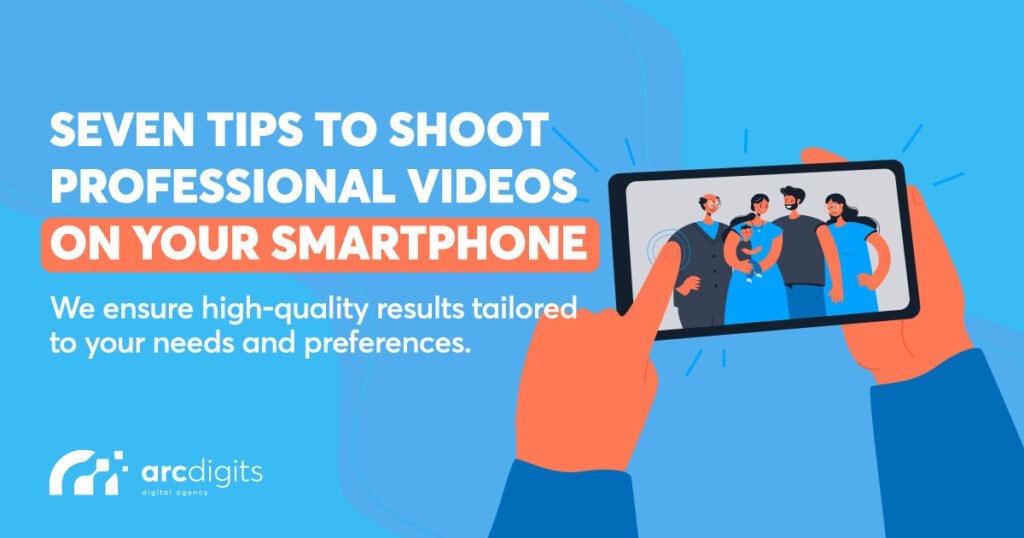In today’s world, smartphones with high-quality cameras and the ability to record video in high resolution have become ubiquitous, available to practically everyone. Professional content creators note that using mobile devices to shoot short videos has many advantages.
Smartphones are always at hand, always available for shooting. There’s no longer a need to lug around bulky camcorders to capture interesting moments on the go. For devices on iOS (Apple) and Android (Google) platforms, there’s a vast array of apps available that expand the camera’s functionality, provide editing tools and effects, and allow for instant sharing of results online. It’s important to note that as smartphone functionality evolves, entrepreneurs working with video have realized the potential for involvement in filmmaking.
However, owning a smartphone with a quality camera is only part of a successful project. Without knowledge and skills in videography, the result may fall short of ideal. It’s akin to building a house: having expensive tools doesn’t guarantee professional results without sufficient preparation and practice.
Your video doesn’t necessarily have to be perfect, but by following the recommendations outlined below in seven points, you can easily create high-quality video, and the result will be simply stunning!
1. Importance of Good Lighting:
Proper lighting plays a crucial role when shooting on a smartphone camera, considering their small image sensors and lenses. Aim to shoot in well-lit areas to avoid shadows and graininess in your shots. However, avoid pointing the camera directly at the light source to prevent overexposure and glare. It’s important for the lighting to be consistent, as sudden changes can affect the image quality. If you encounter lighting issues, experiment with backlighting and white balance settings if your device supports them. Additionally, many smartphones have a “touch focus” feature, which you should use to adjust focus correctly on the desired area of the composition.
2. Maintain Stability and Stillness:
To avoid distortions, blurriness, and the “rolling shutter effect” in your video, it’s important to keep your phone steady during shooting. It’s recommended to hold the device with both hands, keeping it as close to your body as possible. Though this can be tiring, especially during longer scenes, there are technical solutions to ease this process.
Stabilizers, tripods, and camera rigs provide the means to keep the smartphone steady during shooting and usually come with convenient handles for this purpose. If purchasing such devices isn’t feasible within your budget or seems excessive, you can utilize other makeshift supports like a table, chair, desk, or shelf.
3. Sound Plays a Key Role:
Good video with poor sound will leave you disappointed. It’s important to understand that sound quality is just as significant as image quality. Therefore, proper attention should be given to sound recording.
Built-in microphones in smartphones often have low quality and improper placement, which can lead to unwanted noise and interference. It’s important to shoot in a quiet place, if possible, to avoid ambient noise.
Professionals often use separate recording devices or directional microphones to capture high-quality sound. If an external microphone isn’t available, try covering the phone’s microphone with your hand to reduce noise and improve recording quality.
Overall, to create high-quality video with excellent sound, it’s recommended to invest in an external recording device or at least a directional microphone to ensure the clarity and purity of the sound.
4. Get Closer to Your Subject:
By physically approaching the subject, you can achieve better image quality, reduce digital noise, and improve video focus, as most smartphones use digital zoom rather than optical zoom. If your video requires close-ups with super zoom and close-ups of tiny details, use special clip-on macro lenses that are compatible with any iPhone or Android smartphone.
5. Choose Landscape or Portrait Orientation Depending on the Platform You Will Publish Your Video:
- Instagram, TikTok, YouTube Shorts: Vertical orientation is best for these platforms.
- YouTube, Vimeo: Horizontal orientation is best for these platforms.
- Facebook, Twitter: These platforms support both formats, but horizontal video may be more convenient for users watching videos on a computer.
6. Enhance Captured Footage Using Mobile Apps:
The camera app installed on your smartphone may do a decent job of shooting video, but recording video requires more than what most of these apps can offer! Some third-party apps are very intuitive and have excellent features for beginners in the field of content creation, while others have professional features that can unleash your inner George Lucas. And while you may find a few pretty good free apps, investing in a couple of paid apps can ultimately yield huge dividends.
7. Be Prepared for Shooting:
Before starting to record video, make sure you have everything you need: equipment, props, scripts, actors, and shooting locations. Also, ensure that your phone is in good condition and has enough free space (free memory) to store the footage – high-resolution (HD or 4K) video files can be quite large, and shooting them can quickly drain the battery.
Creating excellent video content can be an interesting and profitable activity for advanced directors. By following these tips, you’ll be able to master the art of videography using your smartphone. Through practice, trial, and error, you’ll ultimately achieve professional results.
In that case, if all of this still seems difficult or impossible – due to lack of time, equipment, or expertise – individuals can turn to professional companies like ARC Digits. We are ready to assist with various aspects of video production, ensuring high-quality results tailored to your needs and preferences.


